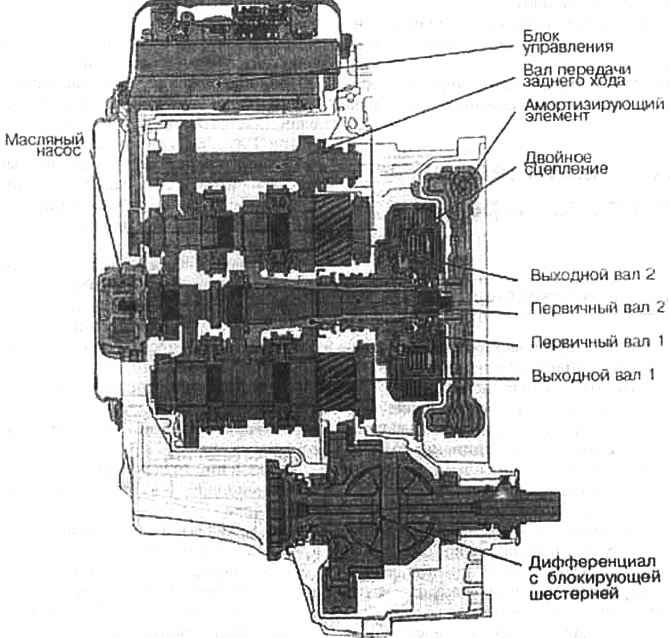In this case, at the beginning of the movement, the automatic transmission performs all the functions inherent in a conventional clutch, and during movement it automatically switches to the necessary gears.
The main elements of an automatic transmission are a torque converter, a planetary gear and a hydraulic or electronic transmission control.
The torque converter in its purpose corresponds to the hydraulic clutch. It provides the start of movement without mechanical engagement of the clutch, as well as switching the gearbox to the appropriate steps, corresponding to the speed of movement.
The torque converter is equipped with a load- and speed-dependent lock-up clutch that allows the torque converter to operate in a separate gear (2, 3, 4, 5 and 6) without slipping, providing direct engagement of the engine with the gearbox.
The transmission control system is an integral part of the engine control system and based on the analysis of data from various information sensors (not necessarily directly related to the functioning of the actual transmission), selects the optimal in terms of economy, smooth switching and other modes of operation of the AT.
It is possible to shift gears manually (tiptronic mode).
If a malfunction is detected, the corresponding code is written to the memory of the transmission control unit.
If the sensors fail, the gearbox goes into emergency operation, which is indicated by the simultaneous inclusion of all indicators of the gearbox modes on the instrument panel.
Transmission fluid filled when installing an automatic transmission does not require replacement for the entire life of the vehicle.
The only transmission maintenance procedure that should be performed on a regular basis is to check and adjust the transmission oil level.
The transmission fluid is cooled in a suitable radiator.
The engine can only be started when the gear lever is in position «R» or «N», which helps to prevent accidental movement of the car when trying to start the engine.
In this section, using the AT 09G as an example, only general information is given regarding the performance of work on an automatic transmission.
DSG automatic transmission
DSG automatic transmission (6-speed, with two clutches) is the latest development from Volkswagen and is characterized by gear shifting without interruption in traction.
The DSG has two clutches housed in a common crankcase, each of which controls separate gears via its own input shaft.
Clutch 1 controls the odd (1, 3, 5) gears and reverse gear, and clutch 2 - even (2, 4 and 6) transmissions.
During the gear shift process, the next gear is already selected but not engaged. The inclusion of one clutch and the simultaneous disengagement of another occurs in three to four hundredths of a second, making the switching process invisible to the driver and passengers.
The electronic control system, depending on driving style, saves up to 10% compared to a conventional 6-speed manual.
It is possible to control the DSG manually or automatically (in normal or sport mode). Manual control is via a lever or button on the steering wheel, or via a conventional selector lever (tiptronic mode) (see illustrations 1.0 and 1.0a).

1.0. Sectional DSG transmission.

1.0a. DSG gearbox components.

Visitor comments